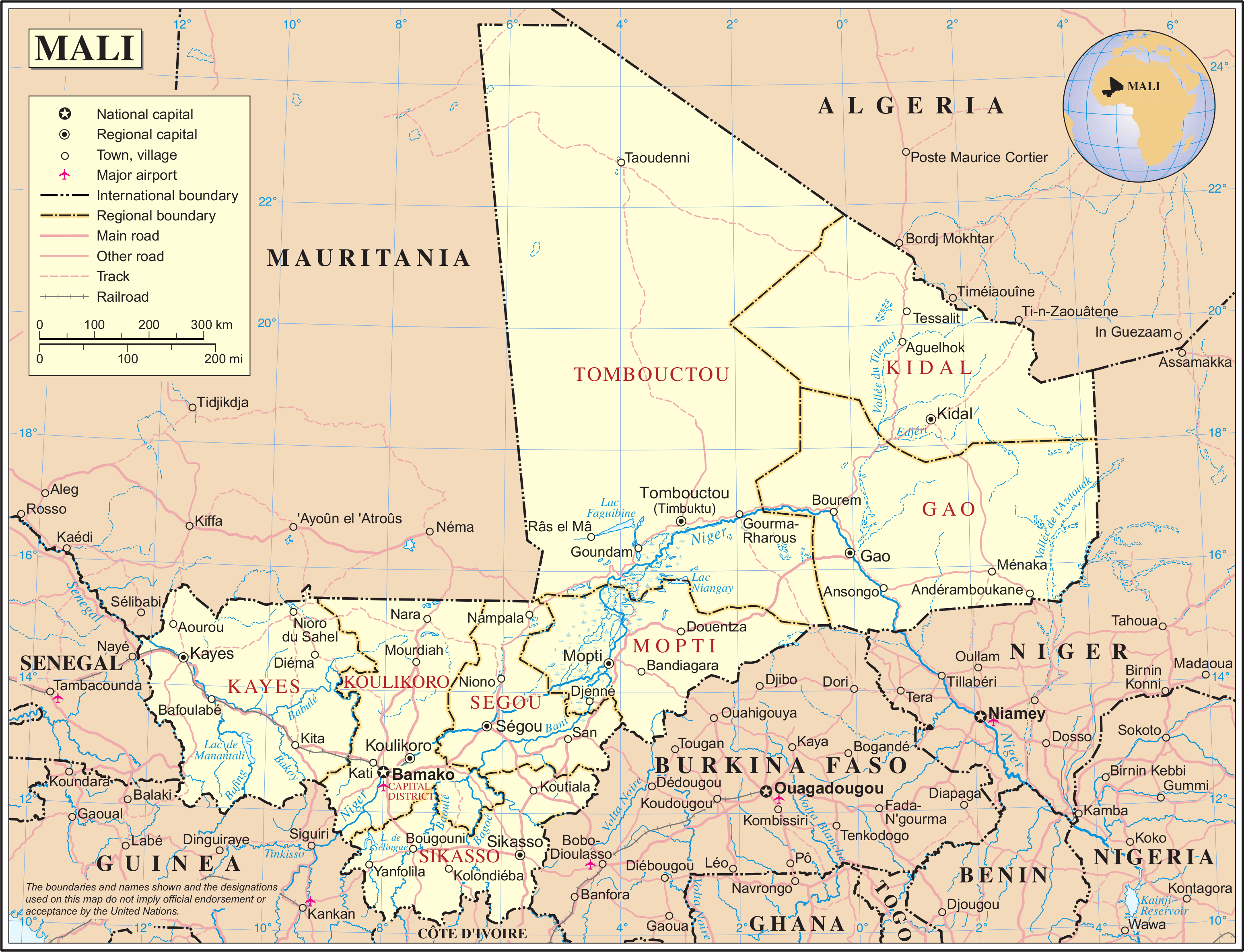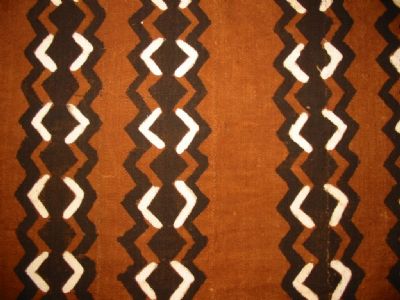|
Kolokani
Kolokani is a town of approximately 57,307 inhabitants in Mali's Koulikoro Region. It is the capital of the Cercle of Kolokani, which consists of 10 rural communes (Didieni, Guihoyo, Kolokani, Massantola, Nonkon, Nossombougou, Ouolodo, Sagabala, Sebecoro and Tioribougou). The cercle of Kolokani has an area of 14,380 km² and a population of 163,886 inhabitants. Residents of Kolokani include the iconic musician Mariam Bagayogo, Rokia Traoré and noted ''bògòlanfini'' artist Nakunte Diarra. See also * List of cities in Mali This list of cities in Mali tabulates all the largest communes in the country of Mali (including those in the north-eastern portion where the Mali Government no longer exercises de facto control). Besides the largest cities and towns (all urb ... References Communes of Koulikoro Region {{Koulikoro-geo-stub ... [...More Info...] [...Related Items...] OR: [Wikipedia] [Google] [Baidu] |
Kolokani Cercle
Kolokani Cercle is an administrative subdivision of the Koulikoro Region of Mali. Its seat is the town of Kolokani, which is also its largest settlement. It lies directly to the north of Kati Cercle. Also to the south, (surrounded by the Kati Cercle) is the District of Bamako, which after independence was carved out of the middle of the Region. The cercle is further divided into communes. The Kolokani Cercle is divided into ten communes:. * Didieni * Guihoyo * Kolokani *Massantola * Nonkon *Nossombougou *Ouolodo *Sagabala * Sebekoro *Tioribougou Kolokani Cercle in the west center of Koulikoro Region, and covers some 12,000 km². It is home to primarily Bambara farmers. Kolokani forms the center of the precolonial Beledougou region, an area which remained staunchly animist after the fall of the Bambara Empire. In 1915, much of the population revolted against French forced conscription in a rising led by Koumi Diosse Traore. The north of the Cercle is dry, Sahel ... [...More Info...] [...Related Items...] OR: [Wikipedia] [Google] [Baidu] |
Koulikoro Region
Koulikoro Region ( Bambara: ߞߎߟߌߞߏߙߏ ߘߌߣߋߖߊ tr. Kulikoro Dineja) is a region in western Mali. It is the second administrative area of Mali and covers an area of 90,120 km2. Its capital is the city of Koulikoro. Geography The region of Koulikoro is bordered by Mauritania on the north, the region of Kayes on the west, by Guinea and the region of Sikasso on the south, and by the region of Ségou to the east. In 2009 the Koulikoro Region had a population of 2,418,305. These were mainly Bambaras, Malinkés Sonikes and around the Niger River. The region is irrigated by several rivers, including the Niger, Baoulé, Sankarani, Baogé, Bani and Bafing. The climate of the region's south has the high rainfall typical of the Sudan, while north of the Kita-Bamako axis, it tends to a Sahelian aridity. The largest cities of the region are Kati, Koulikoro, Kolokani, Nara, Banamba and Dioïla; however the most populous ''commune'' is Kalabancoro. The Boucl ... [...More Info...] [...Related Items...] OR: [Wikipedia] [Google] [Baidu] |
List Of Cities In Mali
This list of cities in Mali tabulates all the largest communes in the country of Mali (including those in the north-eastern portion where the Mali Government no longer exercises de facto control). Besides the largest cities and towns (all urban communes are shown), this table also includes other large rural communes with a population in excess of 50,000. By far the largest agglomeration in Mali is the capital, Bamako, with a population of 1,809,106 (at the 2009 Census). Thus about 12½ percent of Mali's population lives in Bamako. Cities The following table lists all communes with over 50,000 population from the 1 April 2009 census, together with the higher-level administrative unit ( ''région'') and second-level unit ( ''cercle'') in which each is situated. The population figures refer to the real city (i.e. commune) without any suburbs in neighbouring communes. Bamako is a separate capital district and is not within any ''région'' or ''cercle''; it comprises six urban co ... [...More Info...] [...Related Items...] OR: [Wikipedia] [Google] [Baidu] |
Communes Of Mali
A Commune (administrative division), Commune is the third-level administrative unit in Mali. Mali is divided into eight Regions of Mali, regions and one capital district (Bamako). These subdivisions bear the name of their principal city. The regions are divided into 49 Cercles of Mali, Cercles. The Cercles and the district are divided into 703 Communes, with 36 Urban Communes and 667 Rural Communes, while some larger Cercles still contain Arrondissements of Mali, Arrondissements above the Commune level, these are organisational areas with no independent power or office. Rural Communes are subdivided in Villages, while Urban Communes are subdivided into ''Quartier'' (wards or quarters). Communes usually bear the name of their principal town. The capital, Bamako, consists of six Urban Communes. There were initially 701 communes until the Law ''No. 01-043'' of 7 June 2001 created two new Rural Communes in the desert region in the north east of the country: Alata, Mali, Alata, Ménaka ... [...More Info...] [...Related Items...] OR: [Wikipedia] [Google] [Baidu] |
Cercles Of Mali
A cercle is the second-level administrative unit in Mali. Mali is divided into eight ''régions'' and one capital district (Bamako); the ''régions'' are subdivided into 49 ''cercles''. These subdivisions bear the name of their principal city. During French colonial rule in Mali, a cercle was the smallest unit of French political administration that was headed by a European officer. A cercle consisted of several cantons, each of which in turn consisted of several villages. In 1887 the Cercle of Bafoulabé was the first cercle to be created in Mali. In most of former French West Africa, the term ''cercle'' was changed to prefecture or department after independence, but this was not done in Mali. Some cercles (and the district) were, prior to the 1999 local government reorganisation, further divided into arrondissements, especially in urban areas or the vast northern regions (such as Kidal), which consisted of a collection of communes. Since these reforms, cercles are now dire ... [...More Info...] [...Related Items...] OR: [Wikipedia] [Google] [Baidu] |
Bògòlanfini
Bògòlanfini or bogolan ( bm, bɔgɔlanfini; "mud cloth"; sometimes called mud-dyed cloth or mud-painted cloth in English) is a handmade Malian cotton fabric traditionally dyed with fermented mud. It has an important place in traditional Malian culture and has, more recently, become a symbol of Malian cultural identity. The cloth is exported worldwide for use in fashion, fine art and decoration. Origins and etymology The dye technique is associated with several Malian ethnic groups, but the Bamana version has become best known outside Mali. In the Bambara language, the word ''bògòlanfini'' is a composite of ''bɔgɔ'', meaning "earth" or "mud"; ''lan'', meaning "with" or "by means of"; and ''fini'', meaning "cloth". Although usually translated as "mud cloth," ''bògòlan'' actually refers to slip clay with a high iron content. The iron in the clay will stain handspun and handwoven cotton textiles black. Production The center of bògòlanfini production, and the source ... [...More Info...] [...Related Items...] OR: [Wikipedia] [Google] [Baidu] |
Nakunte Diarra
Nakunte Diarra (born c. 1941) is a Malian textile artist, a creator of ''bògòlanfini''. A member of the Bamana tribe, Diarra learned the basics of creating ''bògòlanfini'' from her mother when she was four years old. She has been based in Kolokani for much of her career, but has traveled widely to give workshops and demonstrations of her technique, including spending two weeks at the Smithsonian Folklife Festival in 2003. In 1993 30 of her works were exhibited in an exhibition organized by the Indiana University Art Museum The Eskenazi Museum of Art at Indiana University opened in 1941 under the direction of Henry Radford Hope.Baden, Linda J. Indiana University Art Museum: Dedication. Bloomington, IN: Museum, 1982. Print. The museum was intended to be the center of ... that also traveled to the Fashion Institute of Technology. Her art was the subject of an article, "Nakunte Diarra: Bogolanfini Artist of the Bélédougou", published in the journal ''African Arts (journal), A ... [...More Info...] [...Related Items...] OR: [Wikipedia] [Google] [Baidu] |
Regions Of Mauritania
Mauritania is divided into 15 regions: During the Mauritanian occupation of Western Sahara (1975–79), its portion of the territory (roughly corresponding to the lower half of Río de Oro province) was named Tiris al-Gharbiyya. The regions are subdivided into 44 departments; see departments of Mauritania The Regions of Mauritania are subdivided into 44 departments. The departments are listed below, by region: Adrar Region *Atar Department *Chinguetti Department * Oujeft Department *Ouadane Department Assaba Region * Aftout Department * ... for more information. See also * ISO 3166-2:MR {{Mauritania topics Mauritania 1 Regions, Mauritania Mauritania, Regions Mauritania geography-related lists Subdivisions of Mauritania * Mauritania ... [...More Info...] [...Related Items...] OR: [Wikipedia] [Google] [Baidu] |
Mali
Mali (; ), officially the Republic of Mali,, , ff, 𞤈𞤫𞤲𞥆𞤣𞤢𞥄𞤲𞤣𞤭 𞤃𞤢𞥄𞤤𞤭, Renndaandi Maali, italics=no, ar, جمهورية مالي, Jumhūriyyāt Mālī is a landlocked country in West Africa. Mali is the eighth-largest country in Africa, with an area of over . The population of Mali is million. 67% of its population was estimated to be under the age of 25 in 2017. Its capital and largest city is Bamako. The sovereign state of Mali consists of eight regions and its borders on the north reach deep into the middle of the Sahara Desert. The country's southern part is in the Sudanian savanna, where the majority of inhabitants live, and both the Niger and Senegal rivers pass through. The country's economy centres on agriculture and mining. One of Mali's most prominent natural resources is gold, and the country is the third largest producer of gold on the African continent. It also exports salt. Present-day Mali was once par ... [...More Info...] [...Related Items...] OR: [Wikipedia] [Google] [Baidu] |

